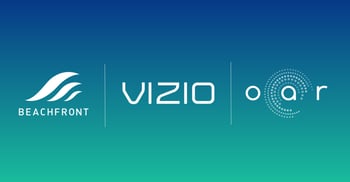ATSC 3.0, Explained
Published by Laura Wu on
Over the past year, the collective media and advertising industry has become enthralled by the thriving ecosystem that’s developed in connected TV (CTV) — and for good reason. Ad spend on CTV devices will surpass $11 billion this year, according to eMarketer, and because CTV content is largely delivered over the internet, addressable opportunities are abundant.
Underneath this captivating narrative, however, are burgeoning opportunities in local broadcast television, all revolving around the new ATSC 3.0 standard. Often overlooked in the broader TV landscape, this new standard is quickly gaining adoption and will unlock valuable addressable opportunities for local broadcasters, ad buyers and viewers alike
Addressable TV after all is expected to reach $3 billion this year, and local broadcast TV is poised to play a vital role in the continued growth of this fast-growing form of advertising thanks in large part to ATSC 3.0. If you’re unfamiliar with the ATSC and the new standard, here’s a quick primer to get you up to speed:
- What is the ATSC?
The Advanced Television Systems Committee (ATSC) is a non-profit organization that develops standards for television, including across digital, broadcast, cable and satellite. Formed nearly 40 years ago, the ATSC boasts some of the most reputable players in TV as members. This includes ABC, CBS, Comcast, Dish, Fox, Gray, Hearst, Nexstar, PBS, Scripps, and more. More information on the ATSC can be found on their website, here. - What is the new ATSC 3.0 Standard?
ATSC 3.0, also referred to as NextGen TV, is a new transmission protocol designed for terrestrial broadcast television, which is TV distributed over-the-air (OTA) through local radio towers (instead of via satellites in space). The next-generation standard brings internet communication to local television distribution, building on existing digital broadcast protocols. - How widely deployed is the ATSC 3.0 Standard, and when will it be ready?
Adoption of the ATSC 3.0 standard is ongoing, though it’s been accelerating in recent months. As of late February 2021, more than 20 local TV markets are “on the air'' with ATSC 3.0, while six markets are “readying broadcasts.” Real-time updates are continually posted on the ATSC website, here. - What benefits does ATSC 3.0 unlock for viewers? In using internet protocols (IP) in broadcast TV, a number of benefits are unlocked for TV viewers, including:
- Easier access to both OTA and OTT television across devices, most notably including mobile.
- Dramatically enhanced viewing experiences, through higher-resolution displays and improvements in reliability.
- Better audio capabilities and quality, including clearer sound and more personalization options (such as preferred language).
- What implications does ATSC 3.0 have on broadcasters and local station groups?
Perhaps one of the most exciting promises that ATSC 3.0 offers is that it unlocks local broadcast TV for addressable advertising. Using the new digitally-native standard, station groups can tap into modern ad marketplaces to make their inventory available to a wider pool of media buyers in real-time. With greater buying activity and demand density, broadcasters earn higher yield for their supply, and can uniformly package local TV programming alongside their CTV, OTT and digital inventory. - What are the advantages of this standard for advertisers?
For media buyers in particular, wider adoption of the standard will effectively increase the amount of traditional TV supply in market that’s enabled for real-time, addressable advertising. This is especially relevant at a time when TV convergence is at an all time high, and advertisers are seeking easier ways to buy addressable media across both traditional and streaming environments. - What’s needed to capitalize on the addressable promise of ATSC 3.0?
While accelerated ATSC 3.0 adoption is a giant step forward in modernizing broadcast TV, it is only one piece of the broader addressable puzzle. For local TV stations to take advantage of all that ATSC 3.0 offers, the standard must be used holistically alongside other burgeoning systems and technical specifications in convergent TV — such as Project OAR. Modern decisioning infrastructure and highly-accurate signaling solutions are vital components needed for the collective industry to truly capitalize on the addressable promises of this new standard.
If you’re interested in learning more about the addressable opportunities associated with ATSC 3.0, join me for a panel discussion March 23rd at 1:30pm EST. You can RSVP here.
Have more questions? If you’re a broadcaster or advertiser interested in learning more about addressable opportunities, decisioning infrastructure and signaling in local TV, reach out to us here:




